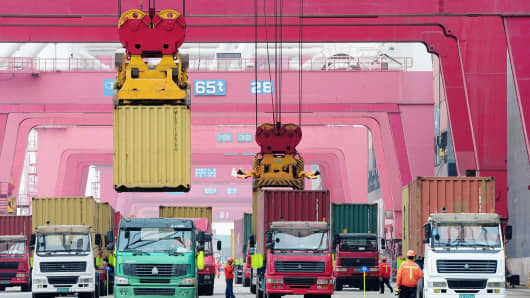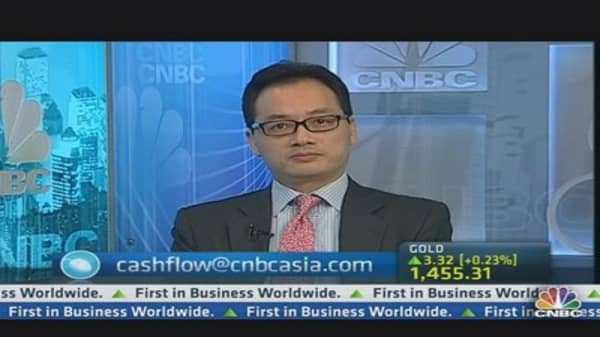Trade numbers for China released Wednesday showed an unexpected increase in imports and exports, leading analysts to question whether the numbers were "misleading" and "distorted." They warned that investors should be wary when interpreting the figures.
Chinese exports rose 14.7 percent in April from a year earlier, official data showed, above market expectations for a 10.3 percent increase, while imports rose 16.8 percent—beating forecasts for a 13.9 percent rise.
(Read More: What Weakness? Global Data Show Silver Lining)
"We continue to notice glaring discrepancies between China and its trade partners' data," Wei Yao, an analyst at Societe Generale said in a research note on Wednesday. "Both figures were again at odds with the unambiguous disappointment in Korean and Taiwanese data as well as in China's own purchasing managers' indices from the same month."
Comparing the trade data against trade numbers released by Hong Kong and Taiwan, SocGen said it was far too good to be true. Marc Chandler, global head of currency strategy at Brown Brothers Harriman also pointed out the discrepancy.
China reported that April exports to Taiwan were up more than 49 percent year-over-year. But Chandler pointed out, Taiwan's figures show imports from China were actually down 2.7 percent year-over-year in the same period.
A possible reason for this could be large amounts of speculative capital flows, according to both Chandler and SocGen's Wei Yao, who has anecdotal evidence from visiting mainland China.
(Read More: China's PMI Miss: Is It Downhill From Here?)
This means that companies could be overpaying for shipped goods within Greater China to enable them to get more money into mainland China—bypassing the strict capital controls.
"Nearly all corporates we met admitted that they were conducting some form of interest rate arbitrage on the expectation of further yuan appreciation. We estimate the distortion to headline trade growth (both exports and imports) to be about 3 to 8 (percentage points)," she said. "Miscounting of such flows under the trade account makes it difficult for the authority to gauge the actual strength of China's export sector, thus risking policy mistakes."





